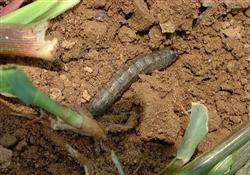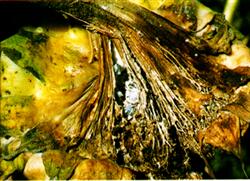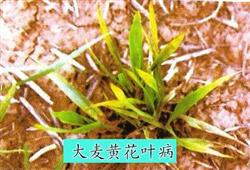What diseases and insect pests should sunflower be prevented and treated?

Which diseases and insect pests should be controlled when planting sunflowers? Please introduce the main pests of sunflower: Golden needle worm, grub, ground tiger, meadow borer, beetle, sunflower borer. Underground pests can be treated with omethoate poison bait. Meadow borer and beetle harm stems and leaves and can spray sodium fluorosilicate. If the seed kernel is harmful, you can use omethoate spray plate when the tubular inflorescence withered. The main pests of sunflower are: rust, Sclerotinia sclerotiorum, Ladang. Rust can be harmful from seedling to maturity, and disease-resistant varieties, rotation, increasing application of potash fertilizer or 2000-fold solution of 25% verapamil are generally selected for control. Sclerotinia sclerotiorum is commonly known as rotten big head, which harms stems and disk, and can be mixed with seeds or treated with stems and leaves. Ledang is a flowering parasitic plant, parasitic in the sunflower root to absorb juice, drought and heat is the most serious harm, the best way to eliminate Liedang is to shovel and hoe in time in the field. 1. Sclerotinia sclerotiorum harm of sunflower sclerotinia disease: it can cause sunflower stem fracture, disk and seed rot, which is a great threat to sunflower production. There are four common types: root rot type, stem rot type, leaf rot type and flower rot type. The flower rot disease showed that after the disk was damaged, the back of the disk appeared water-immersed disease spot, browned and rotted in the later stage, grew white hyphae, spread between achene and fruit seat, formed black sclerotia, the disk rotted and fell off, and the achene could not mature. The less damaged disk produces small seeds, no luster, bitter taste, exfoliated epidermis, and most seeds can not germinate. Sunflower Sclerotinia sclerotiorum control methods: at the initial stage, we can choose Sukeling, Sclerotinia Jing, Nongliling, Wankuli or carbendazim for spray control, focusing on protecting the back of the disk. Because the sunflower plant is tall and tall in the later stage, the spraying operation is more difficult, so we can also take the method of hitting in the field after rain to reduce humidity. 2. Sunflower brown spot control methods ⒈) rotation: rotation with Gramineae crops for more than three years. ⒉) strengthen cultivation management: early sowing in suitable time, reasonable close planting, timely ploughing and weeding, increasing fertilizer application to improve plant disease resistance. When there is water in the field, it should be discharged in time. The bottom leaves of the early disease should be removed manually and buried deeply to reduce the source of re-infection. ⒊) Chemical control: the agents for the control of Sclerotinia sclerotiorum of sunflower are all effective to the disease, and the dosage is the same. In order to treat two kinds of diseases at one time, the disk and the middle and lower leaves should be sprayed at the same time for 1-2 times. 3. Damage of adults and larvae of sunflower borer, Chilo suppressalis: the peak period of adult occurrence is from late July to early August. From 8: 00 to 9: 00 at night, the adults concentrate on the sunflower field to feed and lay eggs. In the first ten days of August, eggs hatch into larvae, feed on seeds, often bite the disk into many tunnels and spin silk to form a net; when it rains, it often causes the disk to rot, reducing the yield and quality of sunflowers. Sunflower borer control measures: before the sunflower is in full bloom and before the larvae are eaten into the seed, the control effect of trichlorfon is more than 90%, but it is harmful to bees and causes many empty shells, so it should be used cautiously, or 5% Yitaibao (Dingchonglong) EC, 0.375-0.45L per hectare, or 35% endosulfan (endosulfan) EC 1.5L-2.5L, water 300,450L, spray disk. You can also choose biological agents, such as BT emulsion dilution spray disk. In the seriously harmful areas, in order to prevent adults, combined with the control of larvae, dichlorvos was fumigated or fumigated with dichlorvos at the end of July and the beginning of August. Click to get more sunflower planting techniques click to get more food crop planting techniques
- Prev

How to prevent and cure rotten head disease by planting sunflowers?
How to prevent and cure rotten head disease by planting sunflowers? Please introduce the harm of sunflower head rot: symptoms and conditions this disease can occur from emergence to maturity, the disease is mostly at the base of the stem, forming a water-immersed spot, white hyphae grow on the spot when the humidity is high, making the stem fragile and easy to break, and finally the whole plant dies. ...
- Next

Barley planting: what is the harm of barley yellow mosaic disease?
What harm does barley yellow mosaic disease have? Please introduce to me the harm of barley yellow mosaic disease: when the disease occurs at the seedling stage, there are short striped chlorotic spots parallel to the veins on the undeveloped heart leaves, then the leaves unfold, and the chlorotic spots combine to form irregular chlorotic mosaics; the leaves are stiff and yellowing.
Related
- The first cup of black tea in spring, the flavor and history of tea gardens in Kenya, Africa
- The computer can not only choose potatoes, but also grow tea rice. AI will grow winter oolong tea champion.
- It is not only the inflated tea bitten by insects, but also engraved with the four seasons tea in Beipu.
- The Oriental Beauty Tea Festival in Zhuxian County takes the stage at the weekend to experience the plus-size feast of oil tea.
- & quot; Oriental Beauty Tea & Exploration of Emei in Hsinchu, the hometown of quot;
- The new variety of strawberry "Tainong 1" dessert is the first choice with mellow aroma. Crimson gorgeous
- History of Tea in Taiwan: from Wild Inner Mountain to Export Tea Garden
- Two types of Taiwan Oriental Beauty Black Tea won the British three-Star Award for Childhood Tea Xiang Zhang Jiaqi changed from pilot to champion tea maker.
- Banana species and varieties: the planting history of Taiwan Xianren banana and dwarf banana is long, is banana disease resistant?
- Coffee planting Technology: Qianjie Coffee from Seedling to harvesting

